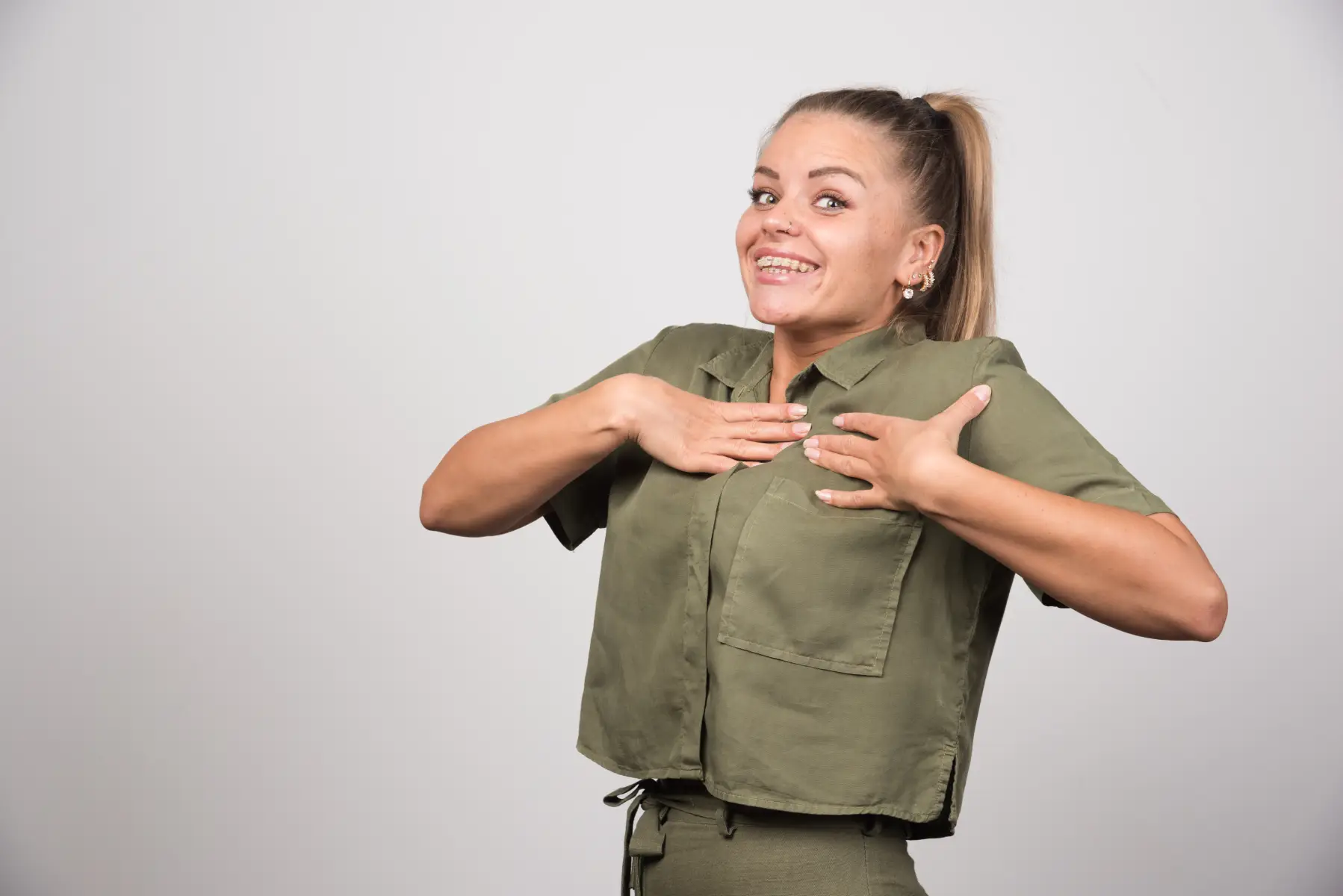Introduction: The Role of Body Language in Communication
Body language is a vital component of communication, encompassing non-verbal signals that convey attitudes, emotions, and reactions. Often described as the “silent language,” body language can express feelings and intentions more powerfully than verbal communication alone. Research indicates that a significant portion of interpersonal communication—estimated at around 60-90%—is transmitted non-verbally (Mehrabian, 1972).
By understanding body language reading and the power of posture and gesture, individuals can enhance their communication skills, build better relationships, and convey confidence and openness effectively in various social interactions. This article aims to explore the key aspects of body language, interpret common cues, and offer practical tips for improving body language awareness.
Key Aspects of Body Language: Posture, Gestures, and Space
Posture
Posture refers to how we hold ourselves—our stance or sitting position—and significantly affects how we are perceived by others. A confident, open posture, characterised by an upright stance with shoulders back, suggests assurance and interest. In contrast, slouching or closed postures can convey insecurity or disinterest.
Gestures
Gestures are deliberate movements made with the hands, arms, or even the head that can augment verbal communication. They serve to emphasise, clarify, or illustrate points being made. For example, open hand gestures can indicate honesty, while pointing may be perceived as aggressive or accusatory.
Space (Proxemics)
The concept of space or proxemics involves how personal space is used in communication. Different cultures have varying norms about personal space; while some may feel comfortable being close to others, others may require more distance. Understanding the appropriate use of space can foster comfort in social interactions.
Common Body Language Cues and Their Meanings
Interpreting gestures and posture accurately is essential for effective communication. Here are some common body language cues and their meanings:
Crossed Arms
- Meaning: Often associated with defensiveness, discomfort, or resistance.
- Interpretation: While crossed arms can indicate protection of personal space, they can also signal that the individual is not open to conversation. However, context matters; this posture can sometimes be used as a self-comforting gesture.
Leaning In
- Meaning: Signals interest, engagement, or enthusiasm.
- Interpretation: When someone leans in during a conversation, it usually indicates that they are captivated by the topic or person. This posture fosters connection and rapport.
Eye Contact
- Meaning: Indicates attention, confidence, and sincerity.
- Interpretation: Strong eye contact can enhance trust and understanding, while lack of eye contact may suggest discomfort, disinterest, or deceit. Finding a balance is crucial; too much eye contact can be perceived as intrusive.
Fidgeting
- Meaning: Often reflects anxiety, impatience, or distraction.
- Interpretation: Playing with hair, tapping fingers, or shifting positions frequently can indicate that a person is uncomfortable or bored. Recognising these cues allows for nuanced interactions.
Open Hands
- Meaning: Suggests honesty and approachability.
- Interpretation: Displaying open palms while speaking can communicate a willingness to engage and an absence of threat, leading to more productive interactions.
Mirroring
- Meaning: Reflects rapport and connection.
- Interpretation: When individuals subconsciously mirror each other’s body language, it often indicates a strong bond or understanding. This can enhance collaboration, especially in negotiation settings.
Cultural Differences in Body Language Interpretations
It is essential to recognise that body language interpretations can vary significantly across cultures. What may be considered a positive gesture in one culture can be offensive in another. For example:
- Personal Space: In some cultures, maintaining close proximity during conversations is a sign of intimacy and connection, while in others, it may be viewed as intrusive.
- Gestures: The “thumbs up” gesture is considered positive in many Western cultures but can be offensive in some Middle Eastern countries. Similarly, direct eye contact is encouraged in many cultures but may be seen as disrespectful in others.
- Posture: Sitting cross-legged may be comfortable and acceptable in some cultures, while in others, it can be perceived as disrespectful.
Awareness of these cultural differences can help avoid misunderstandings and foster more positive interactions.
How to Enhance Your Presence Through Body Language
Improving one’s body language can enhance presence and impact during interactions. Here are some tips to project confidence and openness:
- Maintain an Open Posture: Stand or sit with your arms relaxed at your sides or gently gesturing. Avoid crossing your arms or holding a rigid posture.
- Use Appropriate Eye Contact: Aim for a balance in eye contact, maintaining it while speaking and listening, but avoid staring. A genuine smile can also create warmth and approachability.
- Practice Active Listening: Show engagement in conversations through nodding, leaning in slightly, and giving verbal affirmations. This encourages a positive interaction dynamic.
- Limit Distractions: In conversations, try to eliminate distractions, such as checking your phone. Give your full attention to the person you’re communicating with, which will enhance the effectiveness of your body language.
- Use Purposeful Gestures: Be intentional with your gestures to emphasise key points, but avoid excessive movements that can be distracting. Aim for fluid, natural gestures that feel comfortable and organic.
Practical Tips for Observing Others’ Body Language
To effectively interpret body language cues, consider the following practical tips:
- Watch for Consistency: Look for congruence between verbal communication and body language. Consistency can reinforce trust, while contradictions can signal discomfort or dishonesty.
- Observe Reactions: Pay attention to how people react to your body language. If others seem more engaged when you maintain eye contact and an open posture, you can adjust accordingly.
- Experiment with Different Approaches: During conversations, try out various body language techniques to see how they influence interaction outcomes. Practising different postures and gestures can help find what feels authentic.
- Practice Mindfulness: Being present during interactions enhances the ability to notice subtle non-verbal cues, including shifts in a person’s posture or facial expression.
- Ask for Feedback: Encourage friends or colleagues to provide feedback on your body language during conversations. Constructive feedback can aid in refining your skills.
The Importance of Aligning Body Language with Verbal Messages
For effective communication, it is crucial to align body language with verbal messages. Discrepancies can lead to confusion or mistrust, as individuals may question the authenticity of spoken words. Here are some reasons why alignment matters:
- Consistency Builds Trust: When verbal and non-verbal messages match, it fosters trust and credibility. For instance, if someone says they are excited but their body language appears closed off, it may raise doubts about their sincerity.
- Clarity in Communication: Aligning body language with verbal messages enhances the clarity of the message being conveyed. This reduces the risk of misinterpretation and ensures that the audience grasps the intended meaning.
- Emotional Resonance: When body language complements verbal communication, it enhances emotional resonance. An enthusiastic tone paired with animated gestures can energise a conversation and engage listeners more effectively.
Conclusion: Developing Body Language Awareness
Understanding body language is a powerful tool for enhancing communication and interpersonal relationships. By developing awareness of posture, gestures, and spatial dynamics, individuals can significantly improve their ability to convey confidence and openness in various contexts.
Becoming proficient at reading body language requires observation, practice, and feedback. By aligning verbal messages with body language, one can foster deeper connections and enrich the quality of interactions. In an increasingly interconnected world, mastering the art of body language presents a valuable opportunity for personal and professional growth.
References
- Goleman, D. (1995). Emotional Intelligence: Why It Can Matter More than IQ. New York: Bantam Books.
- Mehrabian, A. (1972). Nonverbal Communication. Chicago: Aldine-Atherton.
- Pease, A., & Pease, P. (2004). The Definitive Book of Body Language: How to Read Others’ Thoughts by Their Gestures. New York: Bantam.










